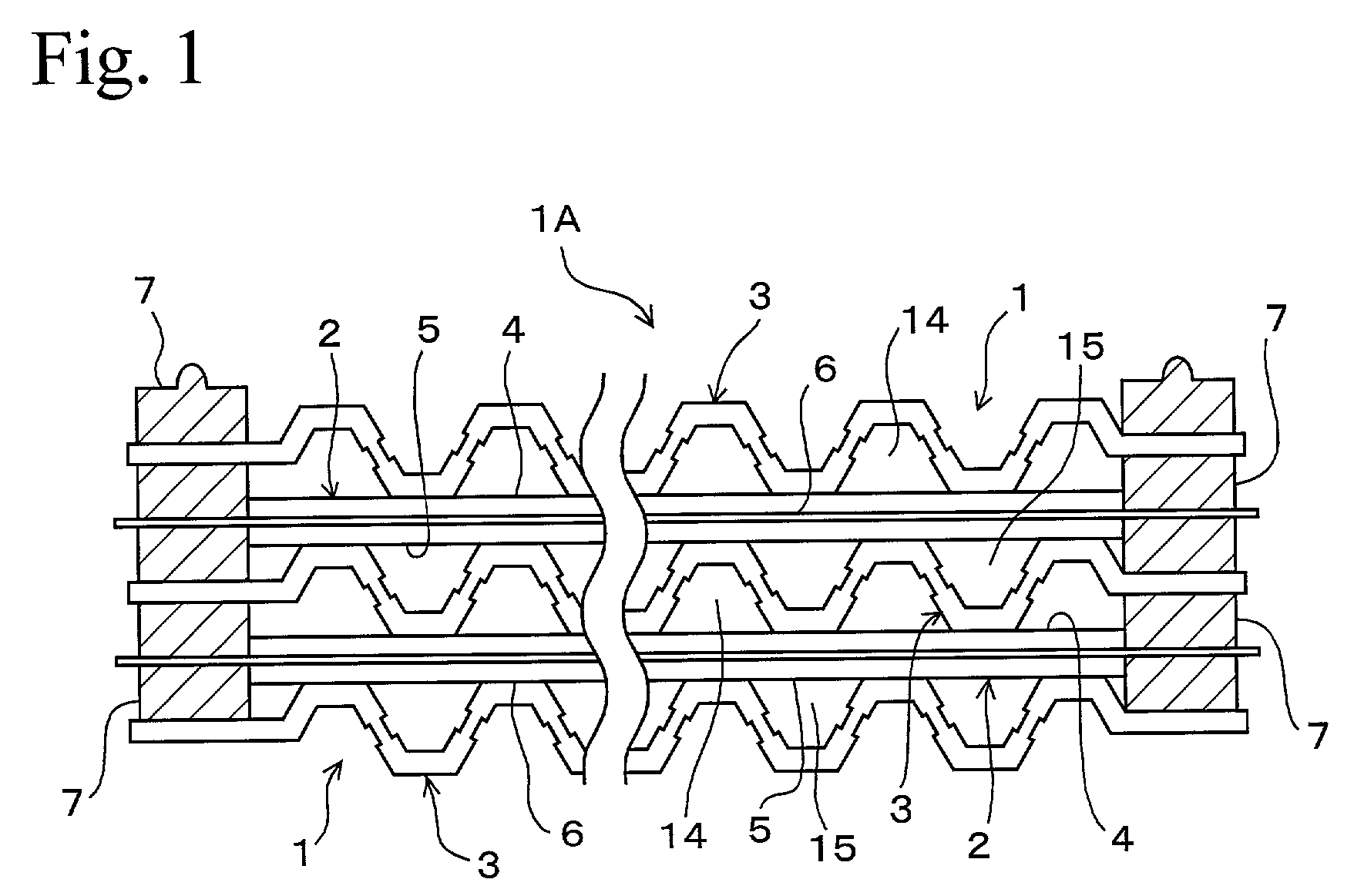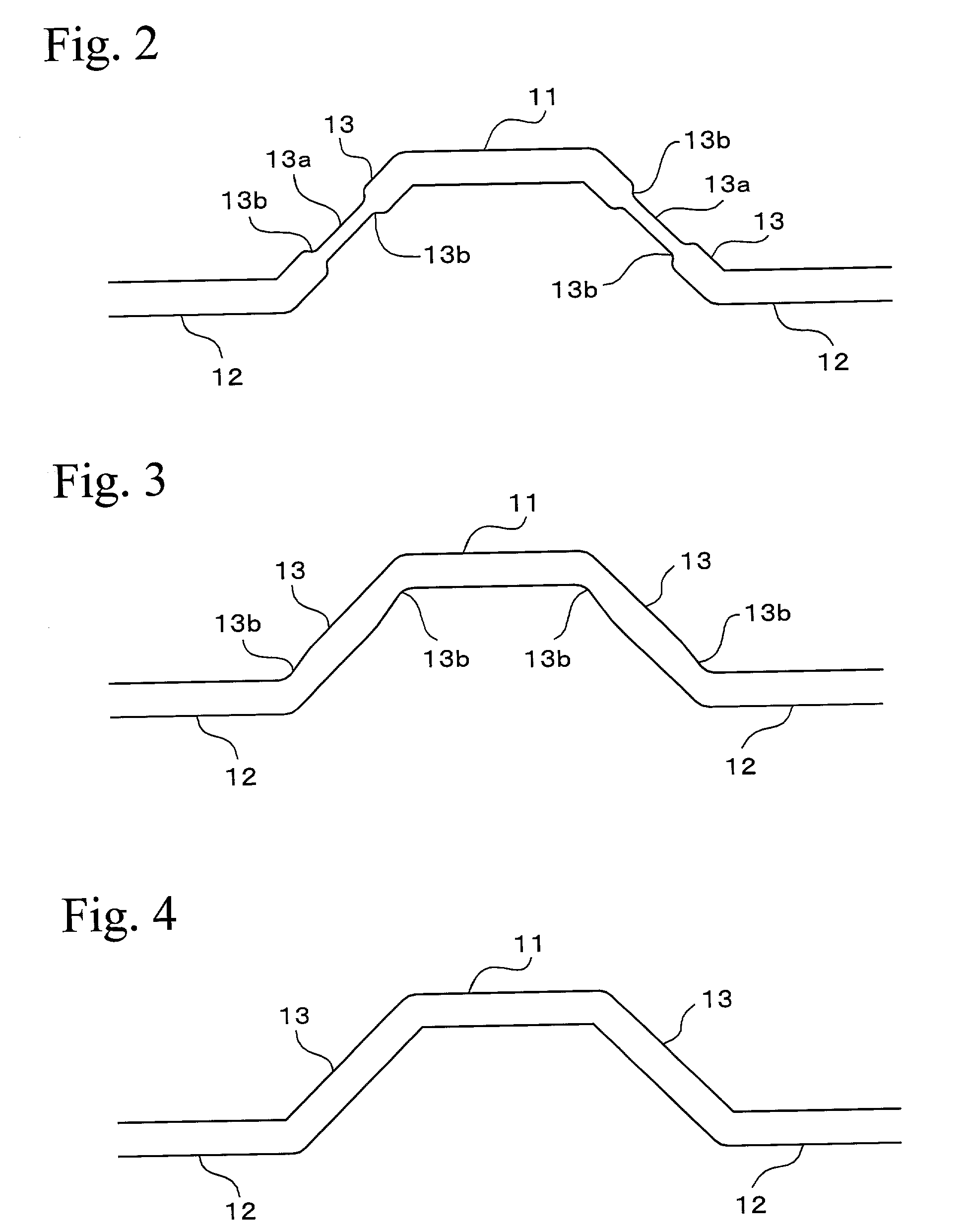Fuel cell and separator therefor
a fuel cell and separator technology, applied in the field of polymer electrolyte fuel cells, can solve the problems of damage such as fractures and breaks in the drawn portion, the difficulty of sufficiently satisfying such a requirement, and the degradation of power generation characteristics
- Summary
- Abstract
- Description
- Claims
- Application Information
AI Technical Summary
Benefits of technology
Problems solved by technology
Method used
Image
Examples
Embodiment Construction
[0029] Next, the advantages of the invention will be proved with reference to examples of the invention.
[0030] Sheets made from stainless steel (SUS 430) having thicknesses of 0.1 mm, 0.15 mm, 0.2 mm, 0.3 mm were press formed to separators (Samples Nos. 1 to 30) having the shape shown in FIG. 3 were produced. The drawing ratios in the drawn portions are shown in Table 1. The maximum thickness "a" of the protrusion, the minimum thickness "b" of the drawn portion, the depth of the gas passage, and the pitch of the gas passages are shown together in Table 1.
1TABLE 1 Generated Maximum Minimum Depth of Pitch of Voltage of Thickness of Thickness of Gas Gas Drawing Current Protrusion Drawn Portion Passage Passages Ratio Density of No. (mm) (mm) (mm) (mm) (%) 0.5 A / cm.sup.2 (V) 1 0.3 0.3 0.8 3 100 0.66 2 0.3 0.28 0.8 3 93.3333 0.69 3 0.3 0.26 0.8 3 86.6667 0.71 4 0.3 0.24 0.8 3 80 0.72 5 0.3 0.22 0.8 3 73.3333 0.715 6 0.3 0.2 0.8 3 66.6667 0.72 7 0.3 0.18 0.8 3 60 0.71 8 0.3 0.15 0.8 3 50 0...
PUM
| Property | Measurement | Unit |
|---|---|---|
| temperature | aaaaa | aaaaa |
| thickness | aaaaa | aaaaa |
| thickness | aaaaa | aaaaa |
Abstract
Description
Claims
Application Information
 Login to View More
Login to View More - R&D
- Intellectual Property
- Life Sciences
- Materials
- Tech Scout
- Unparalleled Data Quality
- Higher Quality Content
- 60% Fewer Hallucinations
Browse by: Latest US Patents, China's latest patents, Technical Efficacy Thesaurus, Application Domain, Technology Topic, Popular Technical Reports.
© 2025 PatSnap. All rights reserved.Legal|Privacy policy|Modern Slavery Act Transparency Statement|Sitemap|About US| Contact US: help@patsnap.com



